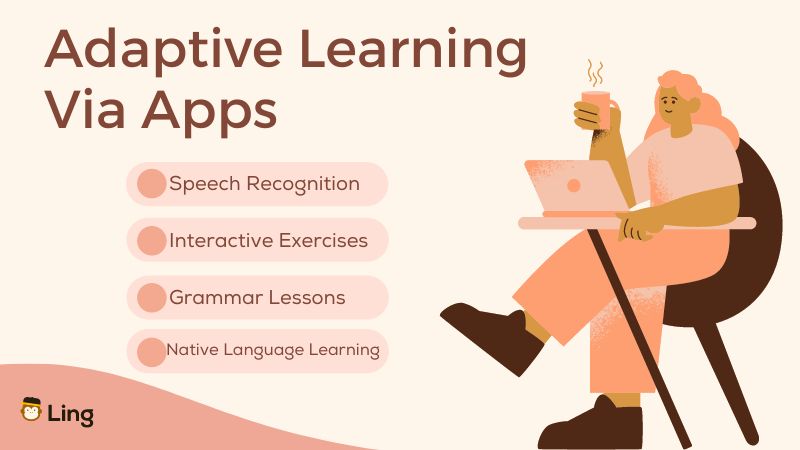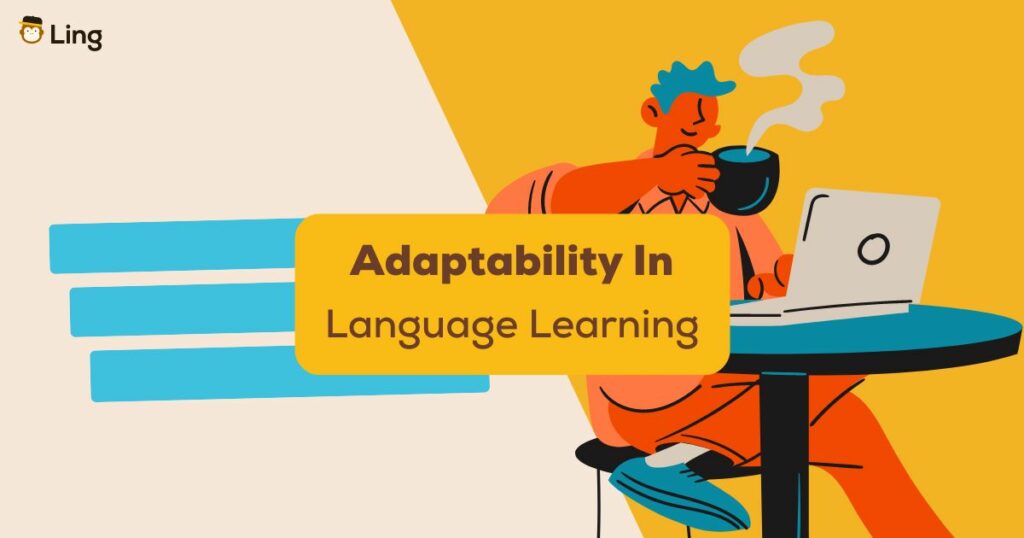In today’s digital age, language learning apps have revolutionized how we acquire new languages, offering tailored content that adapts to our unique needs. These apps leverage data from potential customers’ past purchases, social media posts, and preferences to create personalized learning experiences. By gathering data and analyzing customer behavior, they can craft targeted content that speaks directly to their audience, increasing engagement and retention.
From landing pages to real-world examples in blog posts, language learning platforms utilize many sites and strategies to engage potential customers. They create a high degree of personalization that resonates with the target audience, turning them into brand advocates. This blog post explores how these innovative language learning apps use data to understand the user journey and provide tailored content in language learning.
Table Of Contents
Evolution Of Personalized Content
A hundred years ago, if you wanted to learn a new language, there was almost only a single choice on the market: enrolling in a course with a teacher in a physical location that you had to go to. Language textbooks were produced with the assumption they would be used either in a formal language classroom, or at least in a one-on-one teacher-and-student setting. Traditional language textbooks often lacked critical explanations that the teacher was expected to provide for students, with the textbooks focusing on providing a stock of vocabulary and texts for teacher and student to work with.
Starting in the late 1960s, there was a growth in the market for “self-help” books, which quickly became exponential. Among the topics for self-improvement? Learning languages, of course! These were (and are) basically textbooks that are supposed to play the role of teacher for you, and became extremely popular for their richer variety and greater personalization and accessibility of content.
Language Teaching Books
“Teach yourself” style language textbooks are designed to present you with vocabulary and conversations, but also walk you through the linguistic material in an accessible way designed to facilitate your learning without ever having to avail yourself of a teacher.
But in doing so, these books often had the shortcoming of placing too much of the teacher role on the student, rather than the book. While some better-written books minimized this problem by presenting the information better, they all suffered from the form of the book itself.
Language Learning Apps
Now, in the 21st century, we have a new option in language learning apps. Are language learning apps really better adapted to your needs? Can they help you to learn better?
The views of classroom language teachers on language learning apps and what they can do is not unanimous: Some, especially those who are more suspicious of the “teach yourself” genre of language learning books, share similar reservations about language learning apps. But even so, the overwhelming majority of classroom language teachers consider that if their students make use of language learning apps, it can only help them. The advantages and benefits that they offer to students over language learning books are many. Let’s discuss them below.
Customized Approach Of Learning Apps
Vocabulary
Rather than making the student make all their own vocabulary flash cards from a book’s vocabulary lists, almost all language learning apps make sure to teach and drill the student through digital flash cards. This is a big relief for casual students, and a great starting point for more intensive study!
The software interface makes quizzing yourself on vocabulary much easier to do and to do remember to do than paper flash cards. The visual orientation of app flash cards also helps students learn the vocabulary quickly by helping pair a new word in a new language with familiar imagery that’s been in our brains our whole lives.
“Look, I can memorize vocabulary lists all day long, but if I can’t hold a conversation, what’s the point, right? So, I hunted for an app that offered immersive speaking exercises,” shares Matt Little, Founder and Managing Director of Festoon House. He further continues, sharing his experience with language learning via app, “Let me tell you, there’s nothing quite like the adrenaline rush of trying out your language skills on a real person. Sure, it was nerve-wracking at first, but those practice sessions were worth their weight in gold. Not only did they boost my confidence, but they also helped me pick up on natural speech patterns and colloquialisms that textbooks often overlook.”
Phrases And Conversation
Like “teach yourself” textbooks, language learning apps tend to incorporate this vocabulary into familiar sentences and phrases, as well as whole conversations the student can use to practice reading. Unlike many textbooks (except those which come with audio which often cost most), language learning apps almost always also include audio reinforcement for these sentences and conversations.
Just as with books, depending on the app in question, the vocabulary might lean more playful or more practical. But any decent app ought to provide key vocabulary for students in the language of their choice for many everyday situations. Because apps are all by definition built relatively recently, their vocabulary will be more up-to-date than many books, which could be decades behind owing to their original authorship.
Even better for learning vocabulary is, courtesy latest software, the fill-in-the-blank exercises which can be done again and again to facilitate memorization. Also, sentences can be used to quiz the student using the same flash card style as individual vocabulary words. The app makes this feel quick and easy, but allows you to practice vocabulary in isolation and in context over and over quickly until you’ve really got it in your head!
Grammar Lessons On Your Phone
Because language learning apps are produced with an on-the-go audience in mind, creators work hard to ensure that grammar explanations are accessible and can be read in bite-sized chunks. You can learn new grammar while waiting for a train on the subway.
The Ling app merits a mention here as it is one of the only few apps that offers dedicated grammar lessons in its top language courses like Thai, Tagalog, Serbian, Punjabi and so on. All these efforts are perfect examples to address the question: How to personalize content?
As language learning apps can be constantly updated, unlike a physical book or even a distributed PDF, the app’s creators can over time respond to customer feedback and enrich their curriculum so you won’t run out of content to work from!
The discrete app lessons can be learned sequentially, or you can jump around from topic to topic or language to language. You can drill yourself on vocabulary in a language you speak regularly, or try out a language you’ve always been curious about but don’t speak a word of, all from the palm of your hand!
You can also set notifications to remind yourself to study from the app itself, keeping yourself sharp by letting the technology remind you to take advantage of it at key points in the day.

Which App To Choose?
Now, it is time to answer the inevitable question: Which app should I choose? There are many language learning apps on the market, and there can’t be a one-size-fits all answer. But with the increasingly internationalized market for language learning apps, I think Ling stands out for a few key reasons that I am listing below.
Many Languages To Choose From
Access to the Ling app gives the learner access to all of Ling’s many languages, one of the largest selections out there, from small languages like Armenian to huge languages like Mandarin, from minority languages like Sorbian to popular languages of intercommunication between language communities like Hindi.
If you want to study a lesser taught language, or become a polyglot, or learn the language of your coworkers in a new country, Ling delivers a customer experience like few other language learning apps can thanks to their broad perspective on all the different kinds of language learning happening across the world today.
High Quality, Practical Content For All
Ling ensures that the user can converse on practical topics quickly by offering dozens of units full of essential vocabulary in languages that, even where other language learning apps might offer them, might limit them to fewer lessons, or constrain the education to an assumed cultural sphere.
Ling doesn’t try to teach Cantonese just for dim sum, or keep German students going back and forth between the Strand and the Botschaft. Every language’s lessons are designed to teach the learner how to understand and produce correct sentences on diverse topics.
Ling offers the same number of lessons, roughly an introductory and intermediate textbook’s worth, whether the language is only offered on Ling and might have only a few dozen students, or whether it’s one of the most popular languages for online students on Ling or anywhere else!
Great Cross-Platform Use
People are more attached than ever to smartphones, and why not? You can conveniently work on them wherever you go, from home to the office (and en route on mass transit), to the park or a café! Ling is available on the iPhone app store as well as Google Play, so all students are welcome.
Cost-Effective Pricing
While some language learning apps – or at least some of their lessons – are available for free, they simply don’t offer the diversity and quality of content that Ling does. Ling is one of the most across-the-globe useful language learning apps, which you can use to immerse yourself in many new languages you can’t get elsewhere. What’s more? You can learn a new language through your native language.
Alex C Marcher, a Ling user, vouches for it’s efficacy. “Amazing app! One brilliant thing about the Ling app is that you can learn any of the available languages through any of the others. My kid played around with Chinese though Danish, I’m learning Hindi through Malayalam to get to practice both languages at the same time,” he shares. Alex shares how Ling is helping him in his language learning journey. “I love that each new word is used in a sentence, and I live the dialogues at the end of each lesson for a longer context of how the language sounds. Highly recommend it,” he remarks!
A yearly subscription that covers all of Ling’s lessons and content costs less than a couple of high quality audio-inclusive textbooks for some languages, or a single textbook and a couple of lessons with a teacher. And lifetime subscriptions covering all of this well tailored content are available for about the cost of the industry standard Arabic textbook!
In my opinion, a Ling subscription is one of the best investments you can make in your language learning as a global citizen!
A Community Of Language Learners
Ling users are all over the world and have a passion for learning languages. Ling provides online lessons for its most popular language course – Thai. The Ling blog – a free to use resource – is full of vocabulary and cultural content. Plus, there is much more outside of the app, on social media platforms like Instagram, YouTube, and TikTok.
Ling also maintains a Discord for community information and discussion for Ling users. So you can join the Ling discord community of language learners and find your tribe easily!
Use A Language Learning App Today!
Language learning is a long journey, but it doesn’t have to be a hard one, and can be very enjoyable. Language learning apps like Ling help you to incorporate your study into your daily life and make it into an easy and fun hobby.
Language learning apps can be and do so much more than teach yourself books. They can act as your gently corrective tutor, explaining and giving new context to vocabulary through the relevant content across the lessons. They can act as a source of morale, as cheerleaders, making a game of the experience. And most special of all, they can even act as a community, connecting you with new, like-minded friends from across the world on the same journey that you are!

FAQs About How Language Learning Apps Adapt To Your Needs
What Features Make Language Apps Adaptive?
To make a language app adaptive, the must-have features include interactive exercises that cover reading, writing, speaking, and listening. “Gamification elements, such as rewards and challenges, can motivate continuous learning,” says Daniel Bunn, Managing Director at Innovate.
Daniel has an extensive experience in technology and digital education, and has evaluated numerous language apps for both personal use and professional review. He further states, “Regular updates with new content, community support, and opportunities for real-life practice through language exchange or conversation partners are invaluable.”
How Can Language Apps Cater To Individual Needs?
“Choosing the perfect language app depends on your goals. Want to grasp travel essentials quickly? Look for apps with phrasebooks and audio lessons like Pimsleur. If you crave a gamified experience with bite-sized lessons, Duolingo is fantastic,” says a frequent globetrotter Laviet Joaquin, Marketing Head at TP-Link. And if you are a non-native English speaker who wants to learn new languages in your own native language, then nothing but Ling will work for you.
Laviet shares some of her preferences for choosing a language app:
- Speech Recognition: Perfecting pronunciation is critical. Look for apps that let you record and compare yourself to native speakers.
- Interactive Exercises: Grammar drills can get dull. Engaging exercises like games and quizzes keep you motivated.
- Offline Accessibility: Learning shouldn’t stop when the Wi-Fi goes out! Look for apps that allow you to download lessons for offline use—after all, TP-Link has you covered almost anywhere in the world, but there are still those remote locations!
Can Language Apps Personalize Learning Paths?
Yes, they can. For instance, the Ling app allows you to adjust your language learning path based on a questionnaire when you login into the app for the first time. You can adjust how much time you want to spend each day, you can choose the difficulty level you’d like to start at, you can also choose what aspect of the language you want to focus on more.
Choose Ling Today!
Even a traditional classroom can’t connect you with as many people learning as many languages as the world of language learning apps today can.
So, why not give Ling a try? It’s perfect for getting started from nothing, and I am confident you’ll make quick progress, but it’s also a great tool to help you with classes you’re already taking! The first eight lessons for every language course is free-access to all. Plus, you can sign up for a 7-day free trial to get a hang of the app before choosing to invest into a subscription.
So, go to the Play Store or App Store and download the Ling app. You can start using it without the need to sign-in using a payment method.



































































